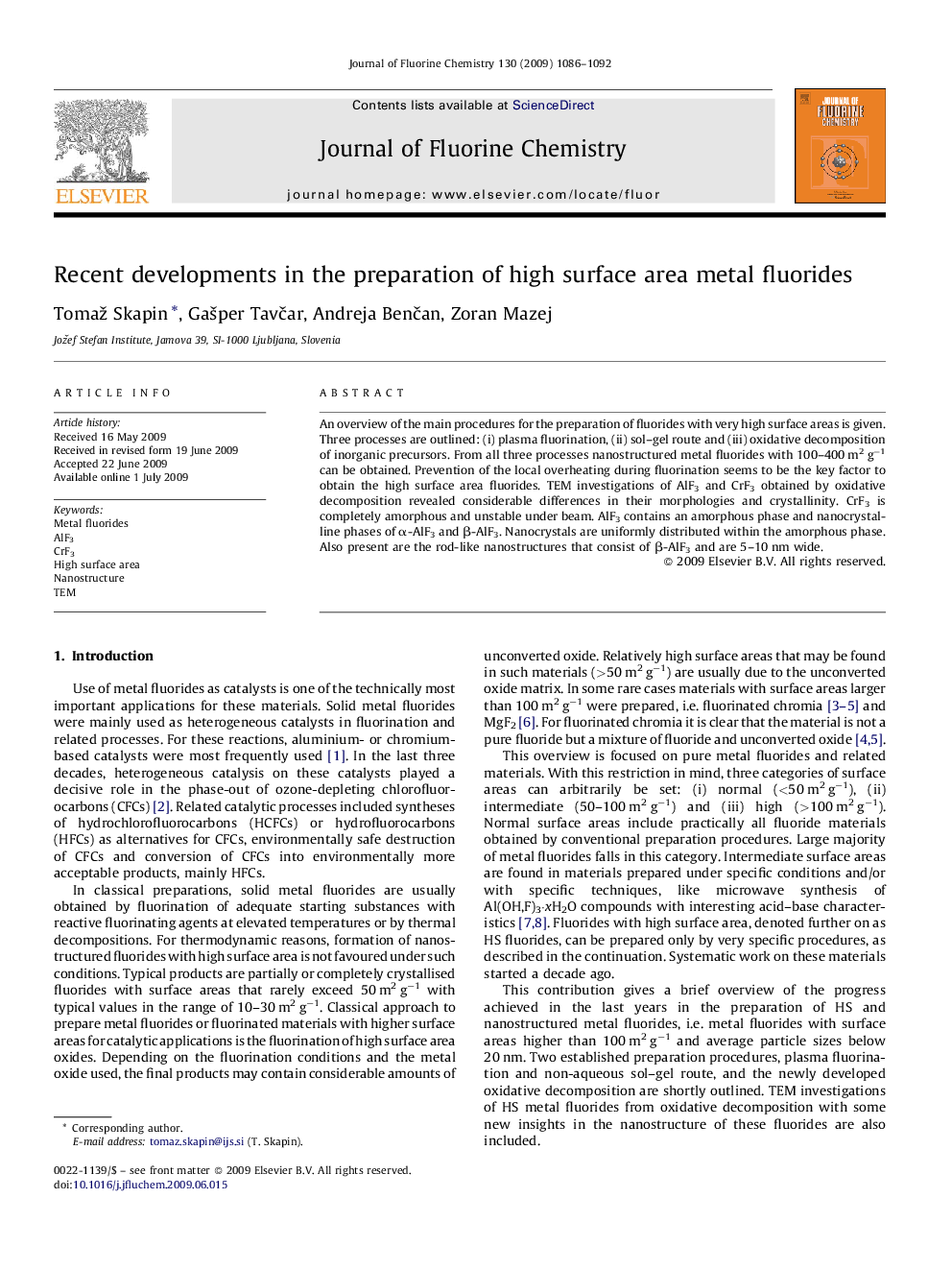| Article ID | Journal | Published Year | Pages | File Type |
|---|---|---|---|---|
| 1315184 | Journal of Fluorine Chemistry | 2009 | 7 Pages |
An overview of the main procedures for the preparation of fluorides with very high surface areas is given. Three processes are outlined: (i) plasma fluorination, (ii) sol–gel route and (iii) oxidative decomposition of inorganic precursors. From all three processes nanostructured metal fluorides with 100–400 m2 g−1 can be obtained. Prevention of the local overheating during fluorination seems to be the key factor to obtain the high surface area fluorides. TEM investigations of AlF3 and CrF3 obtained by oxidative decomposition revealed considerable differences in their morphologies and crystallinity. CrF3 is completely amorphous and unstable under beam. AlF3 contains an amorphous phase and nanocrystalline phases of α-AlF3 and β-AlF3. Nanocrystals are uniformly distributed within the amorphous phase. Also present are the rod-like nanostructures that consist of β-AlF3 and are 5–10 nm wide.
Graphical abstractHigh surface area metal fluorides obtained by oxidative decomposition of hydrazinium fluorometalates are nanostructured. In the case of AlF3, 3–10 nm crystallites of α-AlF3 and β-AlF3 are formed.Figure optionsDownload full-size imageDownload as PowerPoint slide
